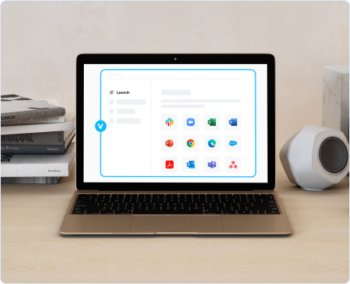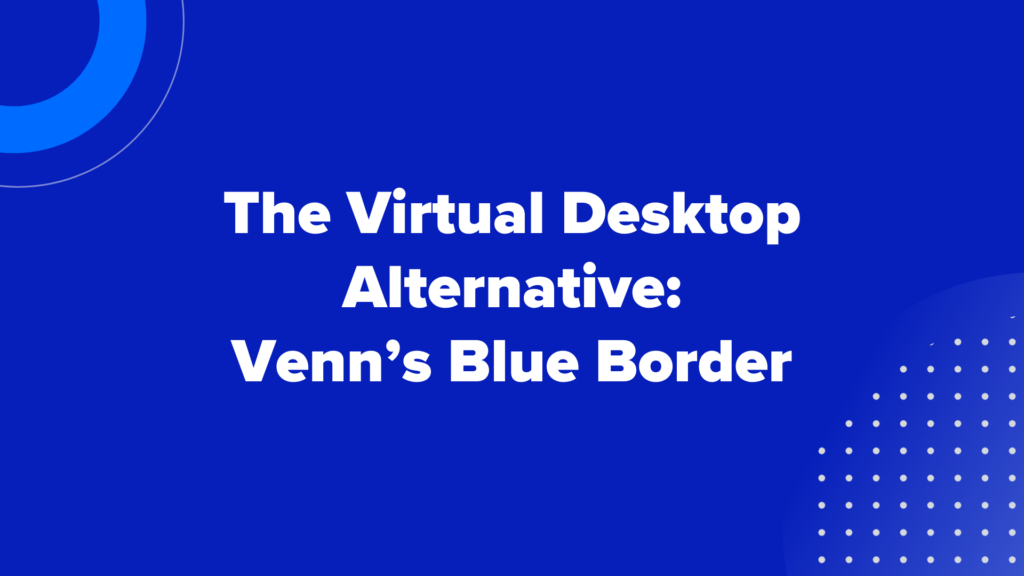The Future of Remote Work is Local: Addressing the 5 VDI Shortcomings

Work is changing.
Employees are working remotely, from multiple locations and devices. They are accessing SaaS applications and conducting video calls. They are also expecting a frictionless technological experience.
Yet, VDI has not.
Virtual Desktop Infrastructure (VDI) still operates with the same complex and high-latency methods that have characterized them for the past two decades.
Today, organizations are looking for solutions that will drive productivity, while ensuring compliance and security requirements are met.
In this blog post we outline the failures of legacy VDI and explain why they are no longer a fit for today’s workplace. Then, we show how a local solution can answer these evolving needs and what’s required to implement one. After reading this blog post, you will be equipped to choosing a remote connectivity solution that can answer your modern needs.
This blog post is based on the ebook “The Future is Local”, which you can read in its entirety here.
5 Failures of Legacy VDI
For the last two decades, VDI was the chosen solution among organizations for secure and remote work. However, modern needs for remote work have evolved: SaaS, BYOD, mobile, Mac computers, hybrid workplaces and more. Here’s where VDI fails:
1. Unacceptable Performance
VDI separates the user’s physical location from their computing environment. The user’s desktop, applications and data are hosted in a different location and accessed remotely. This creates an experience that is dependent on latency, and results in slow application launch times, lags and sluggish performance.
2. Unfamiliar Experience
VDI is counter-intuitive and inconsistent with modern UX best practices. This creates frustration among users, directly impacting productivity.
3. Unusable Video Meetings
Video conferencing is a core component of modern remote workflows. However, VDI does not support an acceptable level of video conferencing performance. The result is loss of productivity or Shadow IT, sometimes even with IT teams guiding on how!
4. Unsuited for SaaS
Cloudification has brought legacy applications to the cloud and turned the browser into a central workspace component. This makes VDI redundant and results in users accessing SaaS applications directly.
5. Untenable Mobile Access
Employees are using mobile solutions for work purposes. Yet, VDI does not support a good user experience through mobile. These usability challenges will hinder productivity or security, if VDI is bypassed.
The 4 Pillars of a Local Approach
What does working Local mean? Instead of working with remotely delivered applications, work applications are launched directly from the computer and run locally providing optimal performance and a familiar experience. Local solutions leverage the power and flexibility of modern devices and are less resource intensive. Browsers, applications, SaaS platforms, files and data are accessed natively, while ensuring productivity, protection and privacy. This means they are a superior approach to VDI and DaaS solutions.
Here’s what a local approach should take into account:
1. User-centric
A good user experience is essential for productivity, recruiting and retaining top talent and ensuring no employee workarounds threaten security or compliance. Therefore a local approach should place the user-experience front and center. Employees expect technology to “just work”, with little to no calibration or compromise, and a local solution should deliver.
2. Risk-centric
A local solution must address the security threats and risks of working remotely, from both managed and unmanaged devices. The main risks include ransomware and cyberthreats, lax or unfollowed BYOD security policies and untrained users.
3. Life-centric
With more employees working remotely and from personal devices, it has become challenging to keep professional and personal activities separate and distinct. A local solution should do just that, without compromising on the experience. This impacts security and retention rates.
4. Future-centric
Remote work is part of the workplace future, and local solutions need to ensure they can meet current and future business goals. Otherwise, organizations will find themselves replacing their infrastructure and devices, dealing with employee churn, having trouble communicating with clients and defying compliance regulations.
Introducing: The Secure Enclave
The Secure Enclave is a new local approach for securing remote work, for both managed devices and BYOD/BYO-PC. It is a radically simplified and less costly solution compared to VDI or locking down PCs. With a Secure Enclave, users keep using the existing devices they know and love to access applications and data. Work lives locally, yet it is controlled and protected in an isolated manner, including encryption and access management. This is indicated by a Blue Border™, for simplicity and ease of use.

Venn Secure Enclave ensures:
- User Convenience – Users can keep using their own device and access applications and data natively with no need to change their methods and practices.
- Easy Deployment – The Secure Enclave integrates with existing infrastructure. Onboarding or Offboarding takes minutes.
- Security & Compliance – Company data is protected from accidental or malicious compromise or loss.
- Privacy – The Secure Enclave ensures a clear separation between work and private personal uses.
- Cost Reduction – No need to buy, manage and secure company-owned PCs and/or Virtual Desktop Infrastructure.
- Control – The Secure Enclave supports robust administrative controls over work applications and data, including policies for network access, peripheral use, copy-paste and more.
- Future-awareness – The Secure Enclave evolves with your infrastructure, since it’s integrated into your existing devices and any future devices.
Read more about how a local solution replaces VDI for modern enterprises like yours, here.

Scott Lavery
SVP Marketing
More Blogs


